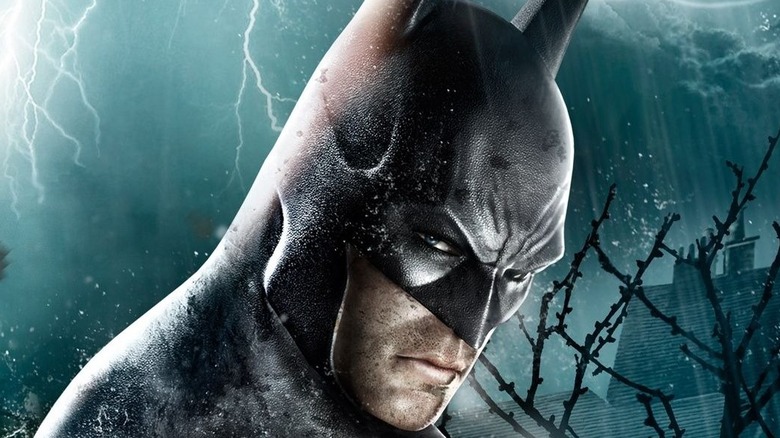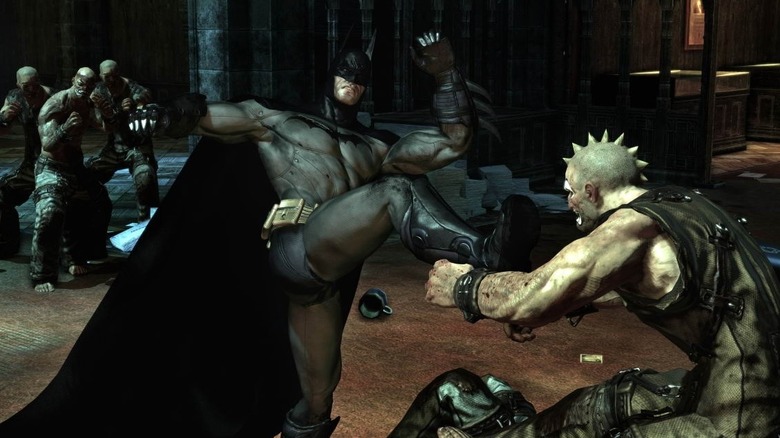Batman: Arkham Asylum Was Actually Pitched As A Rhythm Game
"Batman" fans have a lot to keep busy over between the release of this year's critically acclaimed "The Batman" film and recent good news about the upcoming "Gotham Knights" video game — but with Rocksteady Studios moving on to pursue "Suicide Squad: Kill the Justice League," it's worth looking back at the stellar trio of "Batman" titles that arguably set the stage for modern superhero games. The "Batman: Arkham" series stands on its own two feet for each game's excellent gameplay and narrative, but the franchise also holds plenty of lesser-known facts.
For instance, how many players know the sound effect for using the explosive gel gadget was made by recording someone spraying canned whipped cream, or that each game has heavily teased its sequel? Taking it further, how many are aware that the first iteration of "Batman: Arkham Asylum" was actually pitched to be a rhythm game? Before the caped crusader was set to combat foes with a wide array of gadgets and martial prowess, Batman was being considered for a role that'd have the hero become a master of grooves and beats rather than a creature of the night.
Batman: Arkham Asylum's combat still shows its rhythm roots
In a former Gameinformer segment called Tidbits, the publication had the chance to learn all sorts of wild and interesting facts about "Batman: Arkham Asylum" via stories and accounts told by the development team. Among some fun details — like the fact that the word "Joker" is said 384 times — the most in-depth Tidbit shines some light on what combat development looked like for the team. Rocksteady explained, "Combat went through three distinct revisions – the first one being a full rhythm action game!"
While it may seem initially hard to reimagine "Batman: Arkham Asylum" as something closer to "Crypt of the Necrodancer" or "Sayonara Wild Hearts," it's not too far-fetched if one imagines a little more organization and rhythm to the way enemies attack. That said, the team ultimately evolved its vision. Rocksteady went on to say, "The second one was prototyped in 2D, which popped up whenever you got into a fight, and involved colored circles bashing into each other. This actually formed the basis of the final system."
The studio clearly saw something in the former version's rhythm elements to bring pieces of that gameplay to later versions and eventually strike gold with the final formula seen in the title. While only scraps of the rhythm gameplay survive in the form of the quick time event-like combat, three punches, a counter, and a batarang, with the right beat behind it, could have had a whole different feel.


